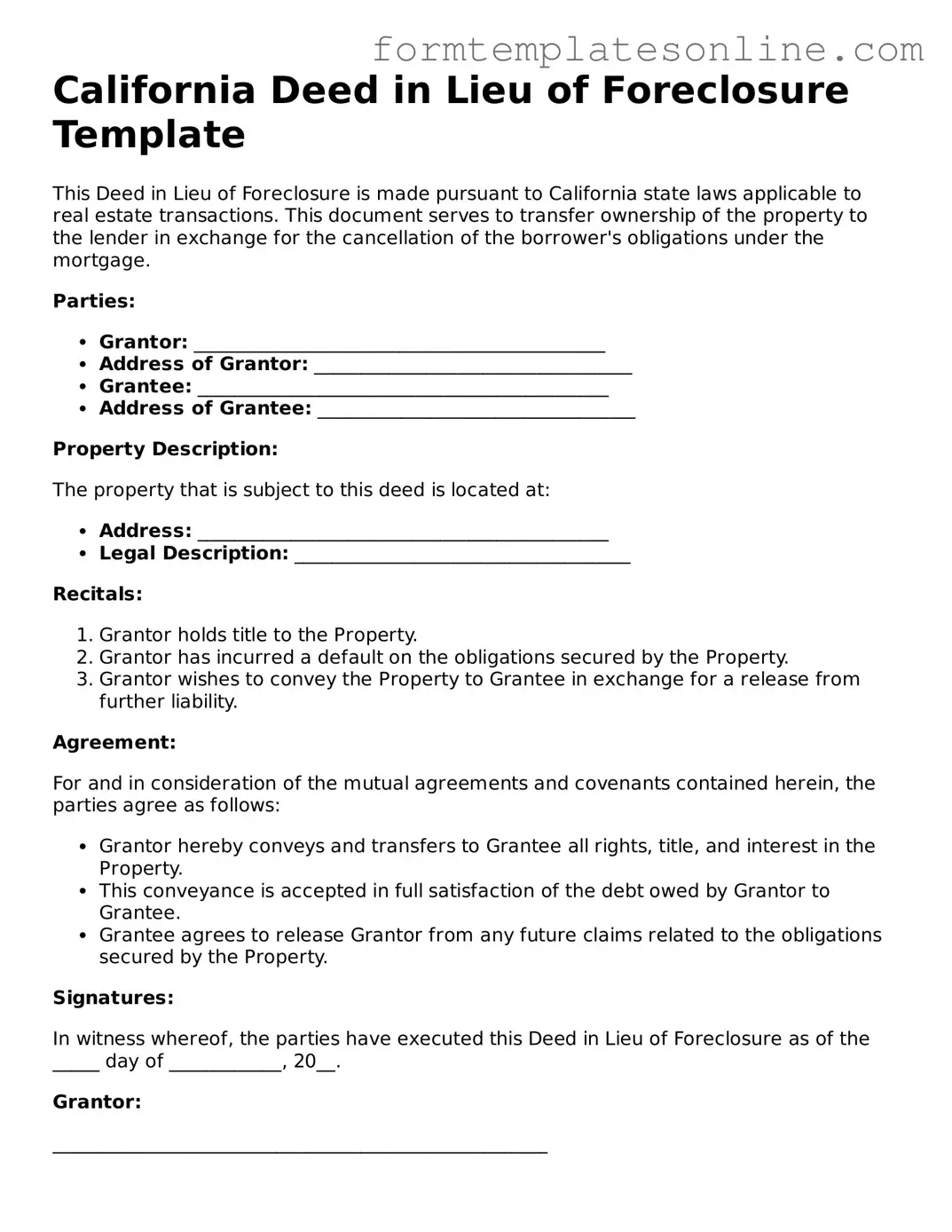What is a Deed in Lieu of Foreclosure?
A Deed in Lieu of Foreclosure is a legal process where a homeowner voluntarily transfers ownership of their property to the lender to avoid foreclosure. This option is often considered when a homeowner can no longer keep up with mortgage payments and wants to mitigate the negative impact of foreclosure on their credit score.
How does a Deed in Lieu of Foreclosure work?
The homeowner contacts the lender to express their interest in a Deed in Lieu of Foreclosure. If the lender agrees, both parties will sign the necessary documents, and the homeowner will hand over the property title to the lender. This process typically requires the homeowner to be current on property taxes and to vacate the property.
What are the benefits of a Deed in Lieu of Foreclosure?
One major benefit is that it can be less damaging to a homeowner's credit score compared to a foreclosure. Additionally, it allows for a quicker resolution and may relieve the homeowner from any further financial obligations related to the mortgage. It can also save time and money compared to a lengthy foreclosure process.
Are there any drawbacks to a Deed in Lieu of Foreclosure?
Yes, there are potential drawbacks. The homeowner may still face tax implications, as forgiven mortgage debt can be considered taxable income. Furthermore, not all lenders accept Deeds in Lieu of Foreclosure, and the process may not relieve the homeowner from all financial responsibilities, especially if there are second mortgages or liens on the property.
Can I get cash for my property with a Deed in Lieu of Foreclosure?
Generally, homeowners do not receive cash for their property in a Deed in Lieu of Foreclosure. Instead, they surrender the property to the lender in exchange for the cancellation of the mortgage debt. However, some lenders may offer relocation assistance or incentives to help homeowners transition to new housing.
How do I know if I qualify for a Deed in Lieu of Foreclosure?
Qualification typically depends on your financial situation and the lender's policies. Most lenders require that you are unable to make mortgage payments and that you have attempted to sell the property without success. It's best to speak directly with your lender to understand their specific criteria.
Will a Deed in Lieu of Foreclosure affect my credit score?
Yes, a Deed in Lieu of Foreclosure will impact your credit score, but usually less severely than a foreclosure. It may still be reported as a negative event, but the overall effect on your credit history may be less damaging, depending on your previous credit standing.
What steps should I take to initiate a Deed in Lieu of Foreclosure?
First, contact your lender to discuss your situation and express your interest in this option. Gather all necessary documentation, including financial statements and proof of hardship. Next, complete any required forms and submit them to your lender for review.
Can I change my mind after signing a Deed in Lieu of Foreclosure?
Once the Deed in Lieu of Foreclosure is signed and recorded, it typically cannot be reversed. It is crucial to fully understand the implications before proceeding. Consulting with a legal or financial advisor is recommended to ensure you are making the best decision for your situation.
What happens to my mortgage after a Deed in Lieu of Foreclosure?
After the Deed in Lieu of Foreclosure is completed, the mortgage is effectively canceled, and you are no longer responsible for the debt. However, any remaining liens or second mortgages may still need to be addressed, depending on the specific circumstances surrounding your property.
